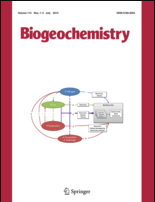
 Increasing demand for food and fibre by the growing human population is driving significant land use (LU) change from forest into intensively managed land systems in tropical areas. But empirical evidence on the extent to which such changes affect the soil-atmosphere exchange of trace gases is still scarce, especially in Africa. We investigated the effect of LU on soil trace gas production in the Mau Forest Complex region, Kenya. Intact soil cores were taken from natural forest, commercial and smallholder tea plantations, eucalyptus plantations and grazing lands, and were incubated in the lab under different soil moisture conditions. Soil fluxes of nitrous oxide (N2O), nitric oxide (NO) and carbon dioxide (CO2) were quantified, and we approximated annual estimates of soil N2O and NO fluxes using soil moisture values measured in situ. Forest and eucalyptus plantations yielded annual fluxes of 0.3–1.3 kg N2O–N ha−1 a−1 and 1.5–5.2 kg NO–N ha−1 a−1. Soils of commercial tea plantations, which are highly fertilized, showed higher fluxes (0.9 kg N2O–N ha−1 a−1 and 4.3 kg NO–N ha−1 a−1) than smallholder tea plantations (0.1 kg N2O–N ha−1 a−1 and 2.1 kg NO–N ha−1 a−1) or grazing land (0.1 kg N2O–N ha−1 a−1 and 1.1 kg NO–N ha−1 a−1). High soil NO fluxes were probably the consequence of long-term N fertilization and associated soil acidification, likely promoting chemodenitrification. Our experimental approach can be implemented in understudied regions, with the potential to increase the amount of information on production and consumption of trace gases from soils
Increasing demand for food and fibre by the growing human population is driving significant land use (LU) change from forest into intensively managed land systems in tropical areas. But empirical evidence on the extent to which such changes affect the soil-atmosphere exchange of trace gases is still scarce, especially in Africa. We investigated the effect of LU on soil trace gas production in the Mau Forest Complex region, Kenya. Intact soil cores were taken from natural forest, commercial and smallholder tea plantations, eucalyptus plantations and grazing lands, and were incubated in the lab under different soil moisture conditions. Soil fluxes of nitrous oxide (N2O), nitric oxide (NO) and carbon dioxide (CO2) were quantified, and we approximated annual estimates of soil N2O and NO fluxes using soil moisture values measured in situ. Forest and eucalyptus plantations yielded annual fluxes of 0.3–1.3 kg N2O–N ha−1 a−1 and 1.5–5.2 kg NO–N ha−1 a−1. Soils of commercial tea plantations, which are highly fertilized, showed higher fluxes (0.9 kg N2O–N ha−1 a−1 and 4.3 kg NO–N ha−1 a−1) than smallholder tea plantations (0.1 kg N2O–N ha−1 a−1 and 2.1 kg NO–N ha−1 a−1) or grazing land (0.1 kg N2O–N ha−1 a−1 and 1.1 kg NO–N ha−1 a−1). High soil NO fluxes were probably the consequence of long-term N fertilization and associated soil acidification, likely promoting chemodenitrification. Our experimental approach can be implemented in understudied regions, with the potential to increase the amount of information on production and consumption of trace gases from soils








